Volubilis is undoubtedly one of the most fascinating historical places, one of many attractions not to be missed during a trip to Morocco. Indeed, in a fertile valley in the heart of the country, this ancient Roman city is the ideal location for a holiday in Morocco’s imperial cities. In this article, we will therefore guide you through its monuments and spectacular mosaics, the archaeological site of Volubilis.
Where is Volubilis located:
At the foot of the Atlas mountains is the ancient Roman town, in a rich and fertile valley of almond and olive trees. In addition, the archeological site is located between Fes and Meknes.
History of Volubilis:
Volubilis’ history is inextricably connected with the Roman Empire’s influence in North Africa. Excavations, however, show that the neolithic area had already been inhabited and that the city was founded later by the Carthaginians. Volubilis reached a peak after the Roman conquest in the 2nd century AD.
Carthaginians and Numids:
The region at the foot of the Atlas, as we have said, has rather ancient sources. It was settled since the Neolithic period but today we know it was established in the 3rd century BC by Carthage. The capital was once the City of Juba II, the mighty king of Mauritania and Numidia. It is one of the capitals. Based on the name of Oulili, which is “pink oleanders,” Volubilis had a traditionally punic look before that time.
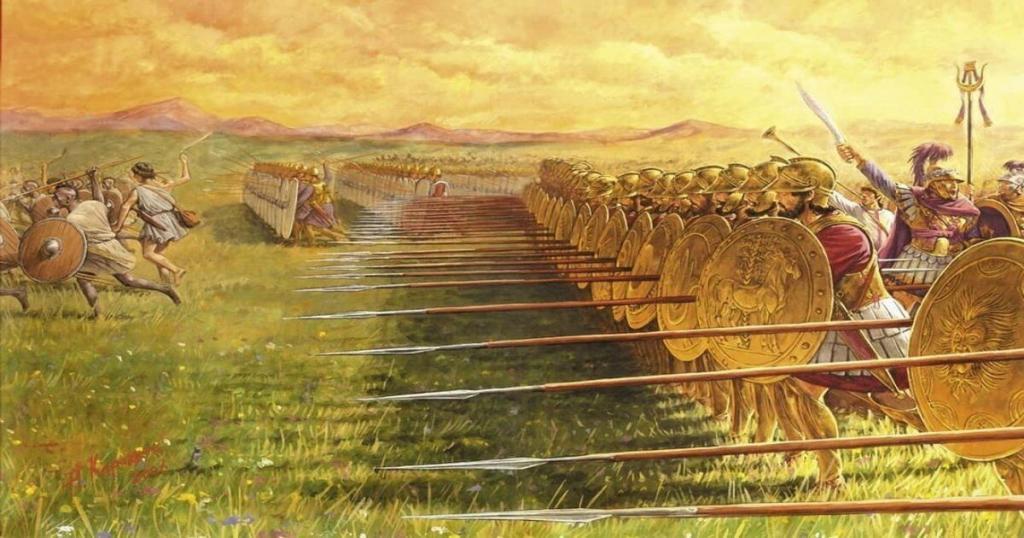
During the Roman Era:
Emperor Claudius certified the Roman conquest of Volubilis in 42 AD. The city became part of the Province of Mauretania immediately following this fact, a region which extended from Tangier to Numidia, current Tunisia. However, Volubilis was a genuine anomaly in this almost inhospitable country.
In fact, the city’s lands have been used to grow wheat and olive oil that meet the empire’s needs. The maximum city’s splendor ran from AD 100 to 200, with a population of up to 20,000. At this moment Volubilis was still evident in its most majestic temples.
The Decline:
In 280 AD, under pressure from neighboring Berber tribes, Romans finally left the city. However, also under Berber rule, people still spoke Latin, amid the abandonment of the Roman empire. The city was in turn inhabited by Greek, Jewish, Berber, and Syrian people, and a significant popular point was the Latin language.
In the end, the Arabic language was forced upon the Muslim invasion of the Maghreb and Moulay Idriss founded the refuge. Thus, until the eighteenth century, when its valuable marbles were plundered, it was populated until the houses of the Holy City of Moulay Idriss.
The Map of the Archaeological Site of Volubilis:
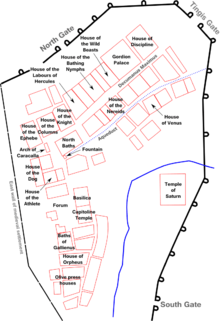
What to see in Volubilis in Morocco?
Following the path that runs off from Caesar’s Gate, after reading Volubilis’s plan we list the major monuments to see in this archeological location.
Ancient Volubilis:
From the main entrance to the south of the site, the ruins of ancient Volubilis of Punic origin were initiated. Though it is not necessary to observe the remains of ancient oil mills here, it is fascinating to observe them. In reality, they show that olive oil production was already in Punic times.
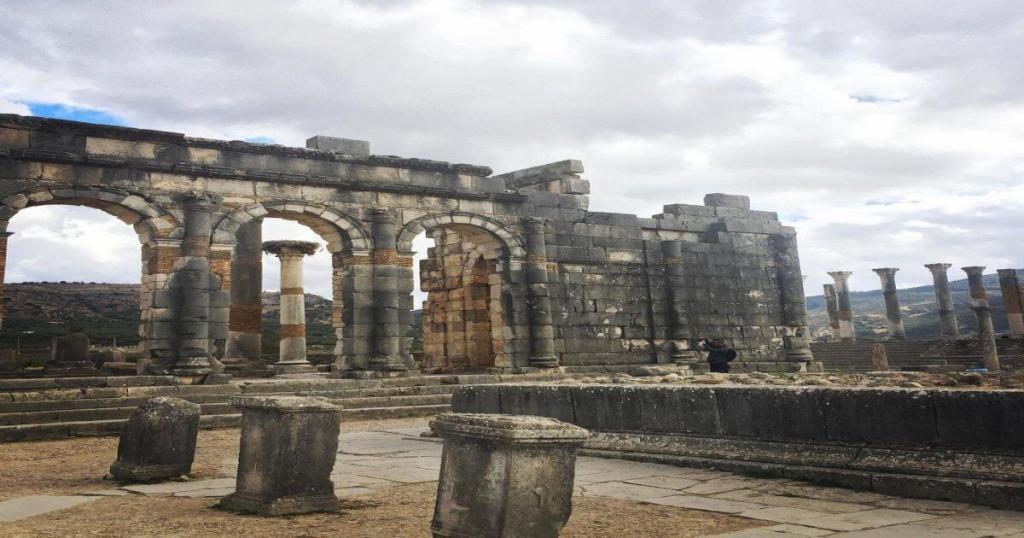
The Buildings:
We walk along the path to the Roman Volubilis heart. A center of the everyday lives of its ancient people, this region consisted of a number of remarkable religious and public buildings. Before entering this area, take a look onto the remains of the Gallienus Baths, where you can still see the public baths and the complicated underground water heating system in the tanks.
The Capitol:
Going north, the formidable Capitol is to be sought. Built-in A.D. 218, it was possibly the most important religious building in the region, during the reign of Severan’s imperial dynasty. In fact, the main shrine in Volubilis consisted of Jupiter, Juno, and Minerva, the Capitoline Triad.
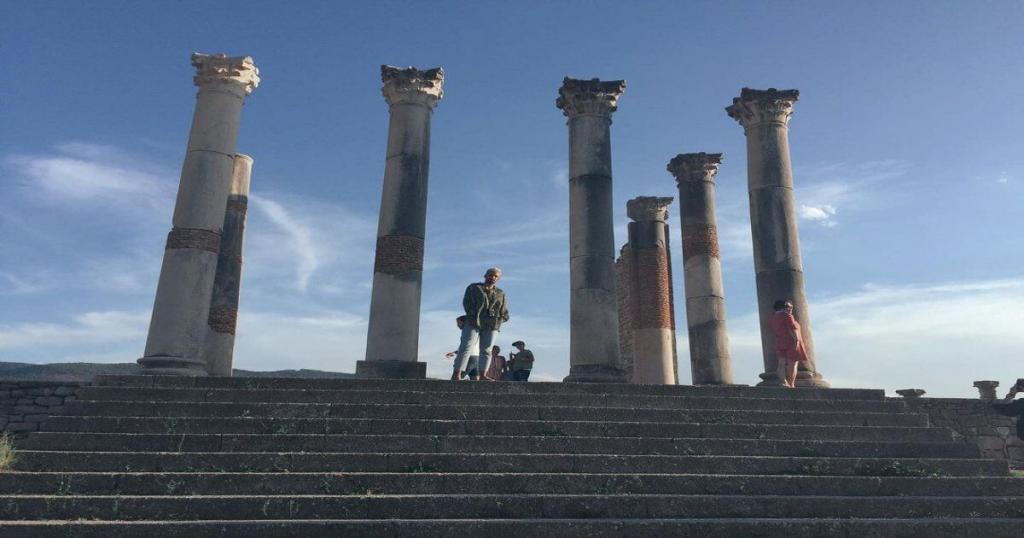
Basilica:
The basilica, the most prominent landmark of the whole archeological region, is the building just north of the Capitol. This is also the location where different city councils, as well as the market and different military drills, were arranged.
Today, instead, it is Volubilis’s most evocative spot. Indeed, storks nest on the ancient columns and its location permits you to enjoy the majestic mountains that surround.
The Hole:
The Forum of Volubilis is somewhat moved westwards. For the people of the Roman city, it was the gathering spot. Columns of several types with many Latin inscriptions still stand today. The sculptures portraying the most illustrious people of the city were funded by these structures.
Arch of Caracalla:
The old city of Cardo opened, eventually, north of the Roman forum. The path crosses the Decumanus, the Arch of Caracalla as in all Roman towns. Built-in 117 A.D. in honor of the same emperor, it was coated with precious white marble, representing the entrance of the city to the wealthy civil houses of the district of the northeast.
Initially, a bronze chariot, now reconstructed, overcame this spectacular Victorious Arch. Stop under the structure to see the stunning scenery!
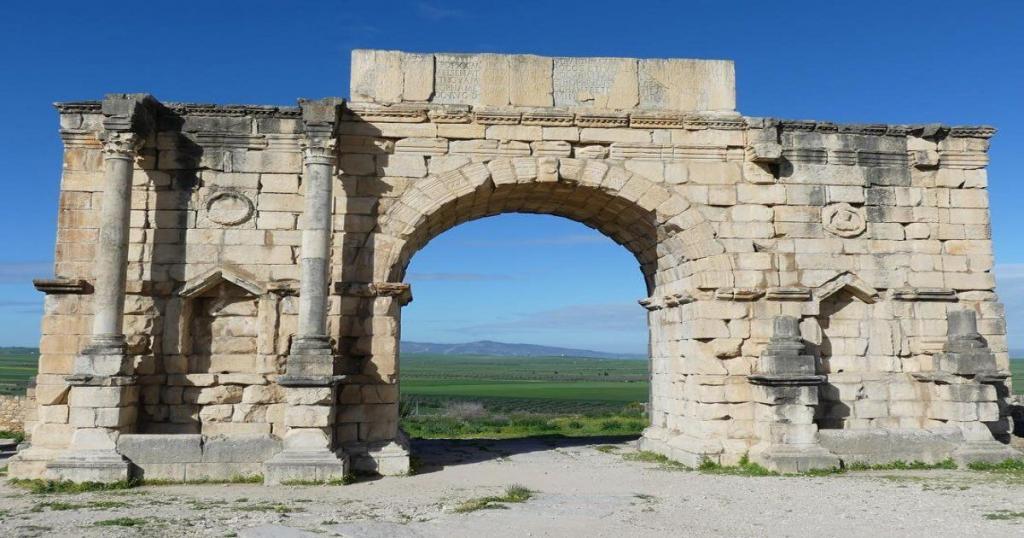
The Mosaic Houses:
We will now discover the marvelous mosaics which were found at the ancient Roman houses after seeing the key monuments of the archeological site of Volubilis. Indeed Volubilis mosaics are the finest mosaics from all of Morocco and the archeological site has best-preserved.
So, let’s look at the Volubilis mosaics in depth!
House of Orpheus:
The first mosaic you find from the main entrance is the House of Orpheus. This was also the largest and most opulent house in the region, with magnificent private baths with caldarium, tepidarium, frigidarium, and solarium. But what is most astonishing about the house is the lovely mosaic that depicts Orpheus as they play the lyre. It’s one of the largest mosaics in all Volubilis, situated in what once was the dining room.
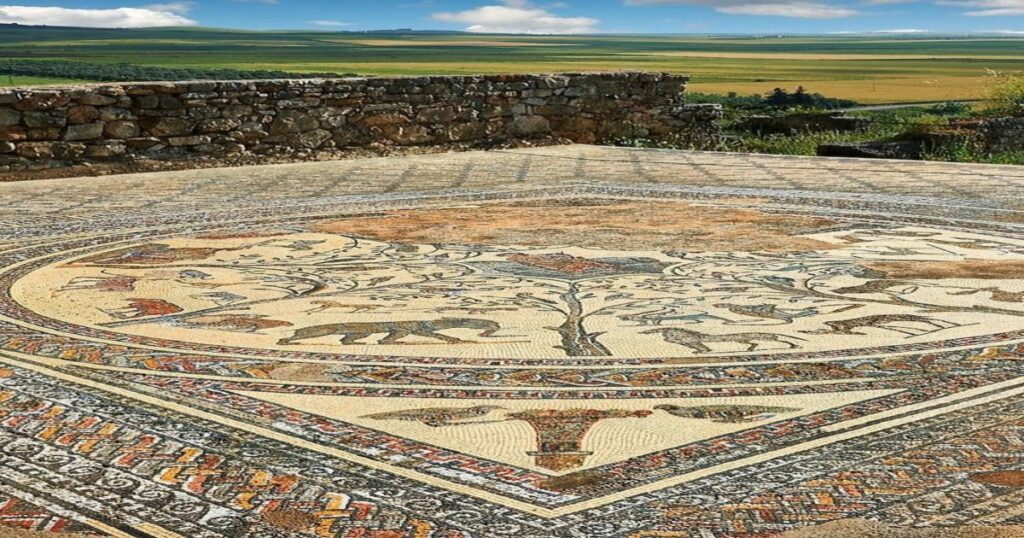
Dolphin Mosaic:
It is also worth resting at the lovely Mosaic of the Dolphins while staying in the House of Orpheus. In fact, as seen in the frescoes of the Knossos Palace, the connection between man and the dolphin is very old. In either case, the dolphins shape the floor of the old house’s bathroom in the case of Volubilis.
Acrobat House:
Two important buildings are situated near the forum. The first is the “House of the Dog,” which is renowned not for its mosaics but because it is the town brothel. You still see today a rock with a gravure phallus, an emblem of brothels, as in ancient Pompeii.
The Home of the Acrobat is in front of it. Located in the center of the district, this edifice houses a mosaic depicting a knight who is trying to get a medal from his horse. This was very popular and practiced by desultory throughout the imperial era.
Knight’s House:
On the Decumanus, one of the biggest mosaics in Volubilis and all of Morocco also lies in the first building. In reality, Bacchus and Ariadne’s mosaic is housed in the House of the Knight. This image is, of course, one of the most complete and realistic depictions of the whole archaeological complexity.
House of the Labours of Hercules:
You’ll see the House of the Laboratories of Hercules at your left, going on along the town of Decumanus. It is also a collection of mosaics showing the hero’s twelve labors. Because many of the events of this myth are thought to have been taking place in Marocco or at least close to Hercules’ columns, Heracles’ veneration was very common in Volubilis.
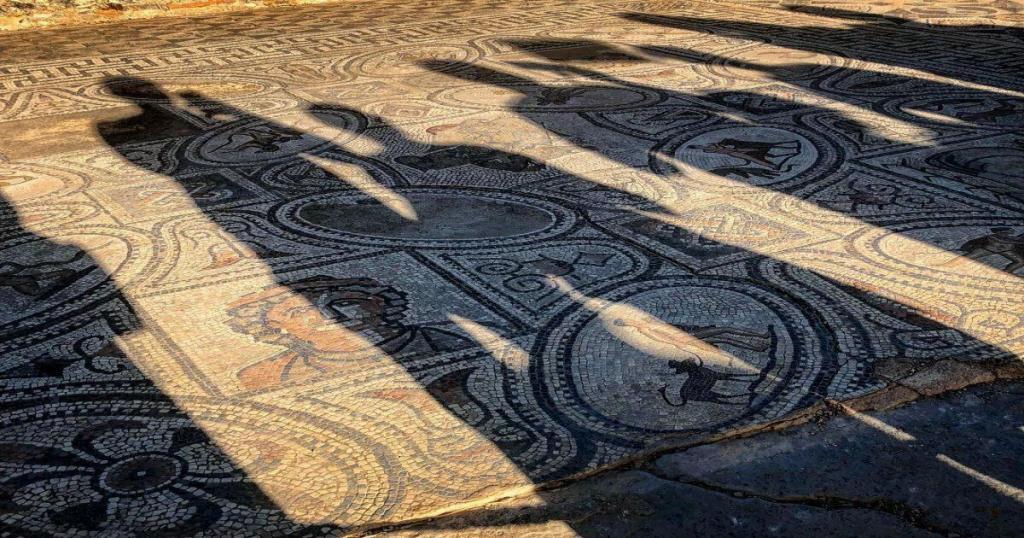
House of Dionysus:
Lastly, Dionysus’ house is so named because of a stunning mosaic representing the four seasons of Dionysus. It is also one of the best-preserved mosaics from ancient times, formed vertically.
Interested to visit Volubilis?
With Touring In Morocco, you can start your tour from Fes or Meknes to visit Volubilis, we can also offer a local guide to this archeological site. Contact us for more information.
If you are looking for a guided tour in Morocco, we can surely customize the best itinerary for you!
FAQ about Volubilis:
The entire archaeological site can be visited in about 2 hours.
The site is available from 8:00 to sunset all year round. But if you intend to visit it late afternoon, we suggest that you are ready at 17:00.
The entry fee is 70 dirham complete and 30 dirham reduced respectively equivalent to roughly 12 and 6 euros.
During the summer, Morocco may be very humid. Therefore we suggest that you carry a stock of drinks, headwear and/or sunscreen if you wish to visit Volubilis during summertime.
North of the city of Meknes lies Volubilis. You can get there on the N 13 north, turn right into the Route de Volubilis, which leads directly to the archaeological site when you enter Moulay Idriss.
The N13 in path to Moulay Idriss should meet Volubilis in approximately half an hour from Meknès.
If you’re driving from Fez, take the N3 to Zaggota and then the N13 to Volubilis. It takes about an hour and a half to get there.
Volubilis is set in a lushly planted valley awash in a rainbow of hues. However, there are few options for overnight stays in the city. As a consequence, we suggest staying in Meknes, a nearby imperial city.
The Latin name Volubilis is unknown, but it is believed to be derived from the Berber name Oulili, which means pink oleanders.
We suggest pairing a visit to Volubilis with a visit to Moulay Idriss, which is just about 2 hours away. In reality, the beautiful Moroccan holy city is just five minutes away from the archaeological site and can be seen from the road that leads to it. In addition, the neighboring city of Meknès, with its magnificent Imperial Palace, is a must-see.

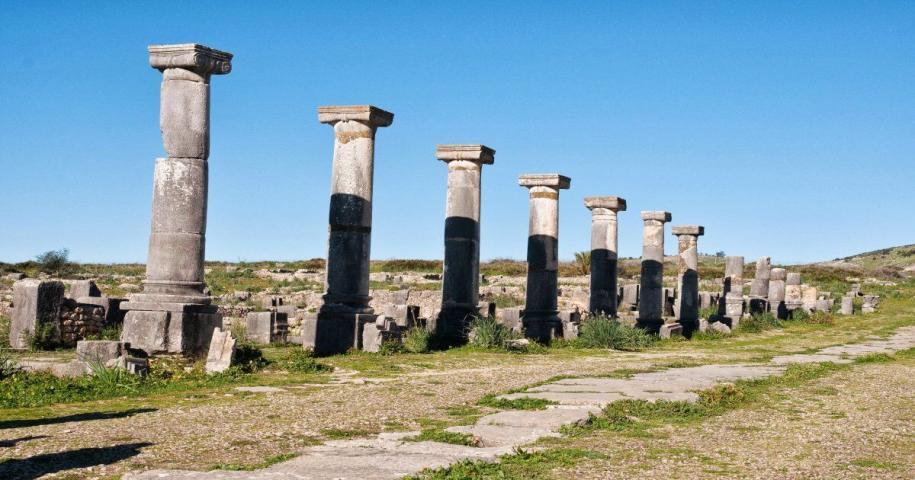
Leave a Reply